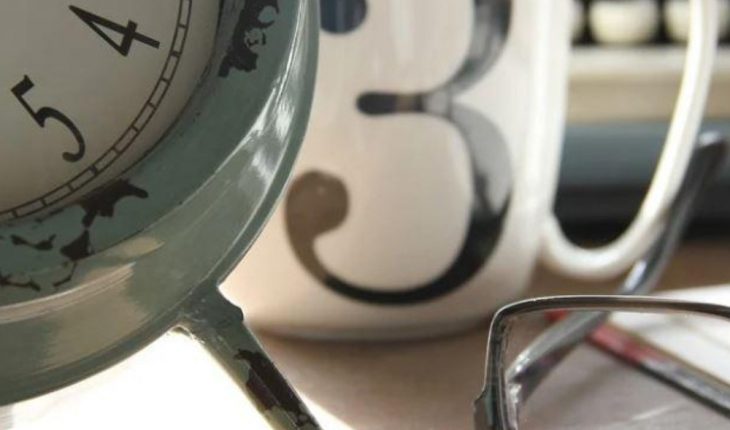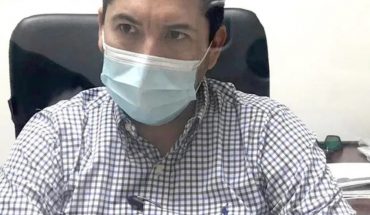
Mexico.- Students from Mexico continue to take their classes remotely with the “Learn at Home II” program of the Secretariat of Public Education (SEP) due to the Covid-19 pandemic prevailing in the country. Here are the questions and activities for third grade this Monday, September 21, 2020, which you’ll need to do as part of your classes.
Stay informed about what matters most to you
Get the most relevant news of the day in your e-mail
Thank you for subscribing!
Check your inbox to confirm your email and start getting the latest news
Take advantage and take the next step
Get our news alerts so you don’t miss anything
Receive notifications
Not bad! You’ve subscribed to notifications
Set up and choose your preferences
Set up notifications
Enter your e-mail
Subscribe
Subscribing involves accepting the terms and conditions
Not bad! You’ve subscribed to notifications
Set up and choose your preferences
Mother Tongue: Even when it’s remote I keep learning
In today’s class, you’ll learn how to argue your views on the topic you develop in an essay and support it with information from the sources you’ve consulted. You know topics related to argumentation to make an essay. As for your knowledge of the language, you know links and expressions that have causal meaning. Now you’ll know the concessive expressions. What are they and what are the concessive expressions?
Concessive expressions: These are those that in a discourse put a difficulty or objection before them, without this preventing their fulfillment.
In other words, when there is a concession argument, you first place an opposing opinion that you want to defend and then reject it with your own argument that helps defend your idea. The most common concessive expressions are:
Although
As much as
Even though
Even though
Still
Even
Now notice how these expressions are applied in some sentences: For example: Today nuclear energy is cleaner and less harmful, although it caused serious accidents like Chernobyl’s.What do we do?
Play the next game to learn. Complete the following sentences with the correct expressions. It’s important to think through the answer based on the explanation above, remember that it’s not about guessing:
Investors decided to exploit natural resources ___________ warned them that they will be sanctioned
A more feasible alternative is to go to work by bike, __________ will be done longer.
____ knowing the risks of nuclear energy, I am confident that it is a good option.
Banking institutions will not finance such projects, ___________ there is an insistence on this by managers.
Dirty energies have a high environmental cost, ___________ many countries depend on them.
_____ we know the damage we are causing to nature, we continue to pollute.
_________ there are clean energy, global warming was not stopped.
______ we generated a lot of garbage, we were able to recycle most of it.
Wind turbines run through the wind, ____________ affect nocturnal birds of prey.
Companies must invest in clean ___________trabajen in oil extraction.
Today’s challenge
Design a game in which the whole family participates, using or finding in some texts, taken at random, phrases with causal and concessive meaning. It could be “enough.” “lottery”, “memorama” or any other that you can think of.
Search for magazines, newspapers or books that you have at home, or if possible, you can also search websites for different texts to make your game. Mathematics: Triangle congruence
You will consider the concepts of congruence and similarity in triangles and quadrilaterals, observe their characteristics and solve problems. Also, you will consider one of the criteria that ensures consistency and another that ensures similarity. The purpose is to define congruence and identify triangle congruence criteria, specific to a first congruence criterion. Watch the following video: Sum of inner triangle angles
In mathematics when two figures have the same shape and size, they are said to be Congruent, i.e.:
Two straight segments are congruent if they have the same measurement.
Two angles are congruent if they have the same measurement.
Consequently: two triangles are congruent if the measurements on their sides and angles are equal.
Picture: SEP
Resolves the following issue:
Gerardo he is a blacksmith and was commissioned to build a swing, to calculate his costs he made a scheme and gave it to Emilio his assistant and said:
Picture: SEP
Emilio made the following structure, according to gerardo’s description and:
Picture: SEP
Notice the structure of the swing How are the ABC and DEF structures, both triangles are congruent? Could it be determined that both triangles are consistent by the LLL criterion? They are congruent because, although you do not know the value of CB and EF, these must be congruent and parallel to the JH, IJ supports otherwise the swing would have a lack of balance or stability.In the entire structure of the swing did you find other triangles consistent by the LLL criterion? That’s the ≅ BECAUSE it has its three corresponding counterpart sides equal, i.e.:
GH ≅IJ
AG ≅ DI
AH ≅ DJ
Remember some of the terms applied, I suggest you write them in your notebook in your own words
Nomenclature: These are symbols for designating geometric figure elements.
Triangle Classification: Triangles are flat figures of 3 sides, 3 angles and 3 vertices, the sum of their inner angles is 180 degrees, these are classified according to their sides in Equilateral (all sides are equal), Isosceles (they have 2 equal sides) and Escaleno (the 3 sides are different). Depending on the measurement of its angles are the Aquatangulo triangle (they have the 3 sharp angles i.e. less than 90 degrees), Rectangle (they have a right inner angle i.e. 90 degrees), Obtusecond (it has an obtuse inner angle i.e. greater than 90 degrees).
Congruence: two figures are congruent if they have the same shape and size, regardless of their position
Consistency criteria: Consistency criteria are used to establish that two triangles are consistent with a minimum of conditions.
Watch the video below to consolidate the learnings gained: Quadrilateral Properties
Today’s challenge
Look at your house for figures that are congruent. For example, windows, plates, books. Write in your notebook all the ones they find, we suggest that you first write the date and title of the lesson, which was “Congruence of Triangles”.
Check out today’s seen learning in your Math book to dig deeper into what you’ve learned.
History: The social and political organization of Ancient Mexico
In this session you will learn to recognize the political, social, economic and cultural characteristics of the pre-Hispanic world. Read the following text that speaks of the daily life of society in the ancient City of Mexico-Tenochtitlan:Order in the cityThe sun was touched, with force the huge patch of the drum of the temple of Quetzalcoatl, so began the day for the people of Tentitochlan and the other localities of the Valley of Mexico.The drums were heard again in the middle of the morning , at noon, mid-afternoon and when the sun goes down. The sound signs, emitted from the Main Temple and repeated in other temples, marked the presence of central authority in the life of cities. With the first touch, the priests of the monasteries and the mothers of each family, in each home, made the first copal offering; with the tingling of twilight, market stalls would rise and people would come home. Also during the night continued the sound signs, produced by trumpets and flutes that novices and priests played from the top of mountains and temples. The Mexican tlatoani aspired to monitor and control the functioning of the city; he sought to ensure that the laws of the kingdom were complied with and that there was order in the streets. The same can be said of the lords of the other cities. To achieve this purpose they had numerous judges, with authority to deal with matters arising, in the wards, and had a central court or hearing. In addition, there was a kind of policeman, a guard who walked through streets and squares.” Escalante Gonzalbo, Pablo “The daily life among the ancient Nahuas” in: En Escalante, Pablo et. to. MINIMUM HISTORY OF DAILY LIFE IN MEXICO. The College of Mexico, Mexico, 2010, p.32.Did you imagine that life in Mesoamerican cities was so organized? Well, it was, at least in Mexico-Tenochtitlán. And in other cities and towns in Mesoamerica? How was society organized and who governed?
Watch the following video: The Lords of the Jungle
Remember the Palenque society groups mentioned in the video? What similarities do you find with regard to Mexican society? Today’s challenge
The challenge is to investigate what society and government was like and how it was organized in your entity during Ancient Mexico. With the results, write a brief written in your notebook, also reflect on what your life would have been like if you were born in pre-Hispanic Mesoamerica.
To further expand your knowledge of this overview of Ancient Mexico, you can review the documentary and visual material offered by your High School Third Grade textbook and ask your teachers for support. Sciences. Chemistry: What do we measure in science for?
You will learn how to identify the extensive (mass and volume) and intensive properties (melting and boiling temperature, viscosity, density, solubility) of some materials. You can also explain the importance of measurement and observation instruments as tools that expand the perception capacity of our senses. Watch the following video carefully and then reflect on the questions: Appearances deceive
If you use only your senses, can you identify the properties of the materials, which ones?
What instruments do you use to identify properties other than those expressed in the previous question?
When you’re going to buy a kilogram of tortillas or a liter of milk, how are you sure it’s really a kilogram or a liter?
What instrument do you use in each case and how do you measure it?
So what is measuring?
When you go to the doctor and get on a scale, why do they do it?
Look at the following flowchart to support you:
Picture: SEP
Measuring then is comparing a known magnitude, with an unknown one, to obtain a result, the known magnitude is called the measurement pattern, which has been previously established by a convention between countries, we currently use the International System of Units, although in other countries the English system is used. To learn a little more about the importance of measuring, watch the video below on how your blood alcohol level is measured. The function of the breathalyzer
Today’s challenge
In your notebook, complete the following box:
Property
Instrument used to measure it
Unit of measurement
Mass
Volume
Arts: Art and My Emotions
You will learn to interpret your emotions and sensations to describe what you experience by observing a variety of contemporary manifestations of the arts. Have you ever wondered how you feel when you see a painting, a play, when you hear a piece of music or a horror story? Have you heard of contemporary art? When you see a painting, a play, a movie, a choreography or when we listen to music, it makes us feel, admire and enjoy the various artistic languages. Art allows you to express yourself and even if it doesn’t seem like it, all the time you’re using various artistic disciplines to communicate and get your emotions out. Specifically, contemporary art is a set of ideas, of techniques, and it has a lot to do with what happens in society.
It is called contemporary because it is intimately linked to what happens in its time, so that different artistic languages such as painting and music are used, not only to express emotions, but to give a critical opinion of social and even political issues, of the moment. The artist uses the languages that give him more expressive possibilities. We suggest you do the following activity, ideally you will do it at the end of the session because that way you will have more ideas that can help you solve it. Find a space in your home where you feel calm and you will need white sheets, colors and a device to play audio. The activity is very simple: it consists of listening to the music that you like the most and while you do it, draw on the white sheets strokes free of the emotions that the music made you feel. With this exercise you will explore how music influences your environment and your emotions. If you like, you can share your strokes with your teacher when you return to school.
And speaking of the environment, have you noticed the wide variety of objects around you?
Remember your walks in the tianguis and markets of your town or colony?
Have you ever been interested in collecting things?
Watch the following video: Itinerary – Exhibition: Melquiades Herrera. Plastic reporting of a cultural theorem
Did you notice how the artist collected objects he found in his wake during his walks through tianguis and markets?
How interesting it is to know the story behind things or activities, then you will see what is behind a dance presentation and how the artist feels, you can take some notes of what they find most important. I’m a dancer
To watch the video click HERE.
Were you able to observe what I feltWas the dancer experiencing during her training? How important can imagination be in developing artistic expressions? She used her own knowledge and words to talk about the music, body movements and sensations they produced for her. Watch the video below and pay attention to how resources such as music, movements, expression, and sync are used. Impro figures
Were you able to observe his movements? How did each of them synchronised with music? What did you think? Today’s challenge
We suggest you perform the activity described above with your family, practice the movements synchronized with a song that they like.
Don’t forget that you can stay in touch with your teacher to discuss your questions or comments.
Good job!
Thank you for your effort





